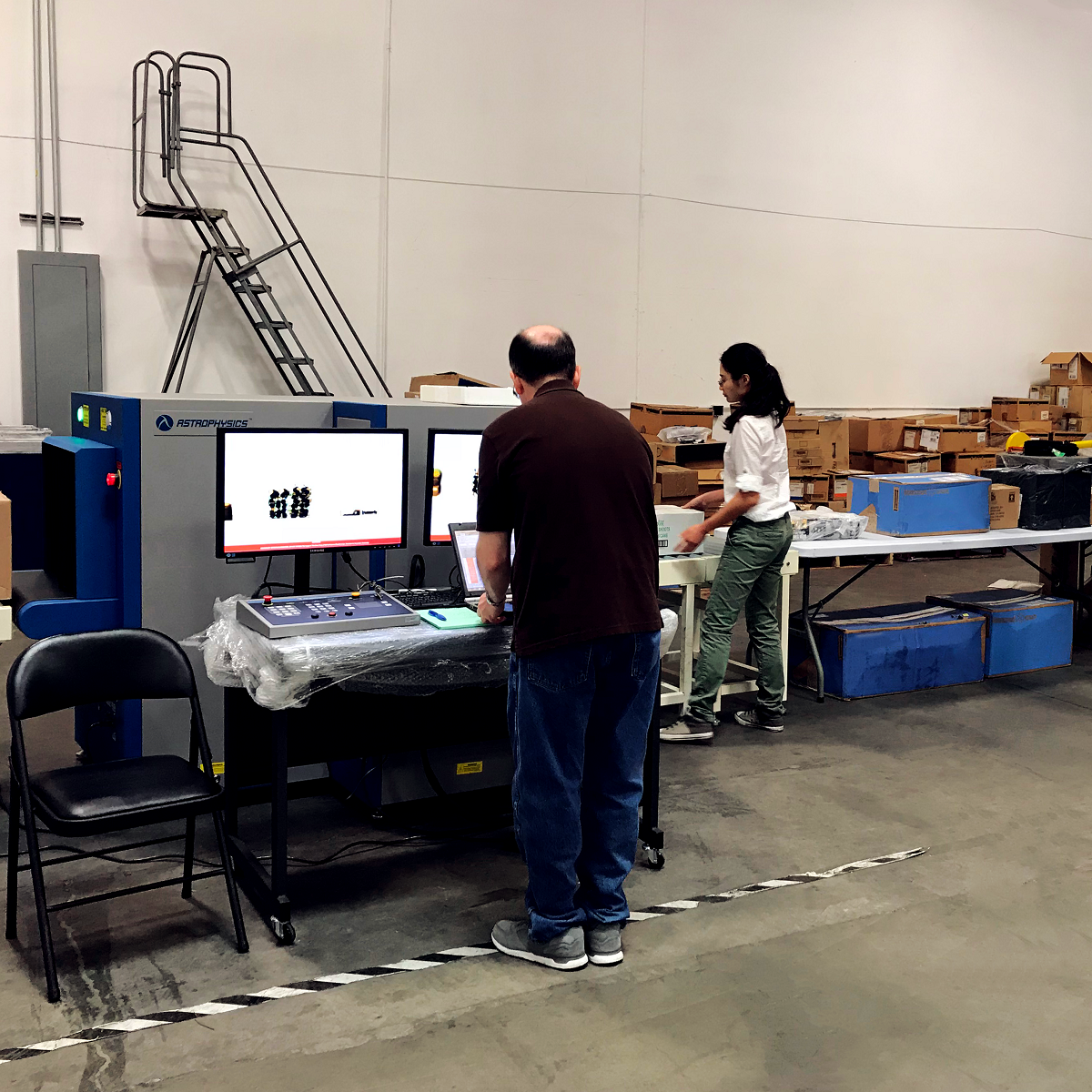
Air Cargo skids and pallets take up a large amount of space on every commercial passenger flight. Federal law requires this cargo be screened at the same level as checked baggage. Single and dual energy X-ray systems can be scaled up to screen air cargo skids, but they produce two-dimensional views of air cargo that are often difficult for screeners to interpret due to the complexity of the content’s image. So, many skids are broken down into smaller configurations or single packages and screened individually or with trace explosive detection swabs similar to those used in passenger screening lines.
Increases in computing power, algorithmic complexity, and machine learning capabilities offer opportunities to enhance current X-ray screening capabilities and reduce the amount of time to break down and reassemble transported cargo. The Department of Homeland Security (DHS) Science and Technology Directorate (S&T) and the Transportation Security Administration (TSA) are collaborating to address these challenges. S&T funded development of the Opacity and Complexity Analysis Software Tool (OCAST), a support algorithm to assist X-ray operators in determining possible threats in cargo and which areas pose no threat, despite complex X-ray images.
“TSA is interested in augmenting existing systems to improve their performance and reduce burdens on the operators,” said DHS S&T Program Manager for Air Cargo Kumar Babu. “OCAST does this with powerful image processing software. It is essentially an automatic algorithm that analyzes an image and provides an operator a description of the complexity of the image. The operator can use that score plus their own view of the image to determine whether to pass the cargo or investigate further.”

The tool, being developed at the S&T Transportation Security Laboratory (TSL) in Atlantic City, N.J., gives the operator a simple interface with a red/yellow/green color report. A red light means the cargo should be inspected a second time (breaking the skid down). Yellow indicates the software is not sure of a threat, and the operator should investigate further before making a decision. Green means the cargo’s image is clearly seen, and if the operator does not see another reason for concern, the cargo does not need to be broken down.
The first live assessment of OCAST was conducted in late October 2018, at Seattle-Tacoma International Airport. OCAST was installed on a screening machine provided by Astrophysics, Inc. Alaska Airlines allowed TSL to use its cargo facility and stream commerce cargo for the demonstration.
The OCAST software’s next step is its integration with a full-sized skid scanning machine, provided by Astrophysics. A laboratory demonstration is planned for early 2019. Future development will include improvements to the algorithms to eliminate uncertain “yellow light” returns and field testing a full-skid scanner integrated with OCAST.
This should significantly improve the efficiency of the cargo screening process.
“OCAST will help, not so much with the machine, but with the operator of the machine,” said Babu. “It will provide input to the screener that these images are too complex to effectively analyze and make it easier for the operator to identify potential threats, thus improving screening accuracy and throughput. It will also serve to enhance existing machines until the next generation of improved machines is available.”
TSA is expected to begin using OCAST in June 2019 to support its air cargo screening efforts. It will provide low-cost enhancement to many screening facilities as the cost of distributing software and performing the necessary system upgrades is minimal. The value of the added security and efficiency will far exceed the development cost, especially as air cargo (measured in both volume and dollars) is increasing rapidly year to year.
“This will lead to increases in throughput as well as safety,” said Babu. “Air cargo is very complex, but as we continue to build on this technology, we can better prevent catastrophic situations. OCAST gives us a bridge to those future systems, so cargo gets the right kinds of attention.”

